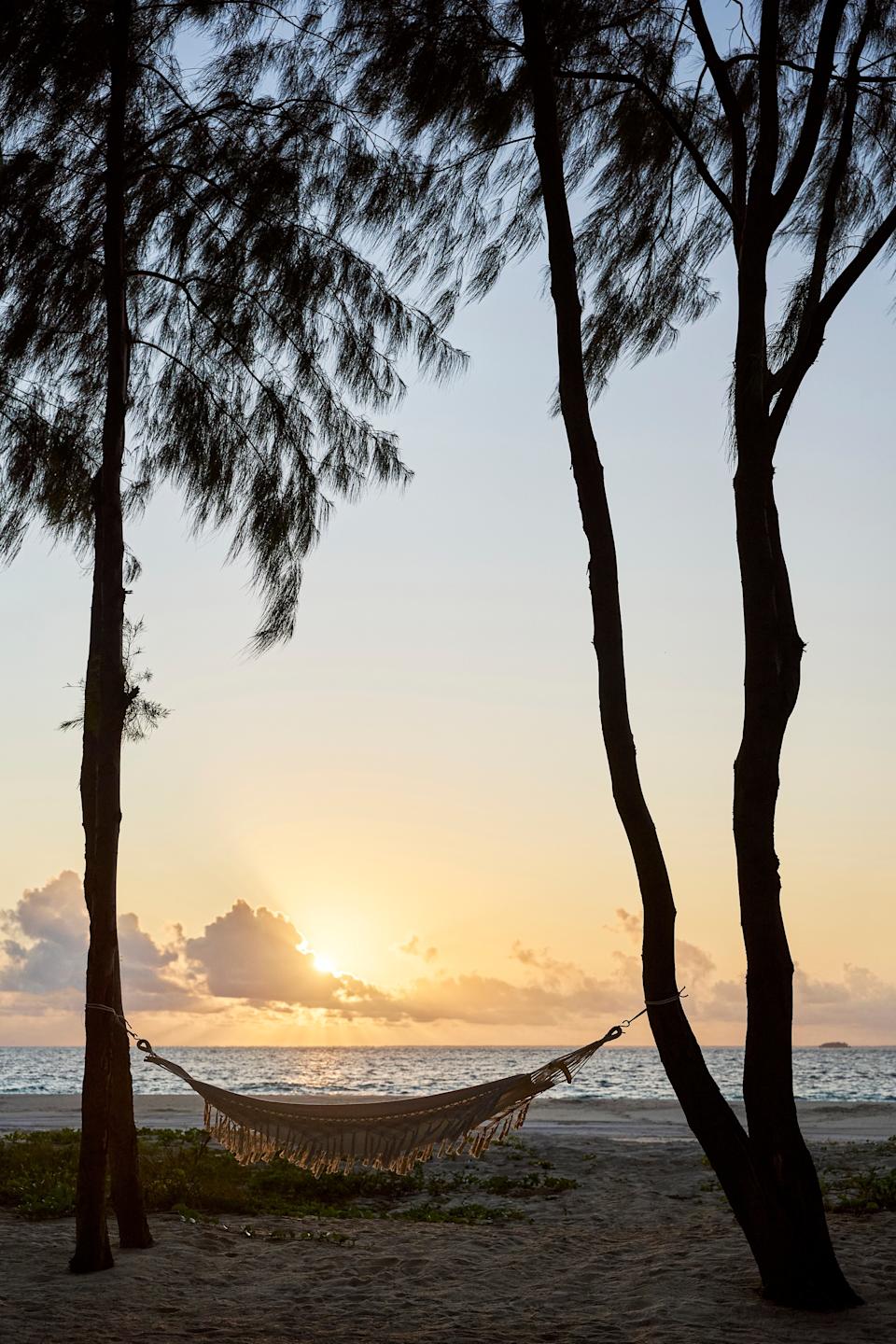With almost 900 miles of tropical Indian Ocean shoreline, Tanzania is as much a coastal destination as it is a safari hotspot. The warm islands sitting off the coast of this East African nation are steeped in heritage, lined with sandy beaches and fringed by coral reefs. Often known as the Swahili Coast, the region is a fascinating swirl of Bantu traditions and Islamic influences. The marine life here — which includes whale sharks, a legally protected species in Tanzania — is a huge draw for travellers and a natural wonder that locals are working hard to protect. From relaxing on Pemba Island’s untouched beaches to wandering the historic streets of Zanzibar, here are five experiences to savour across Tanzania’s eastern islands.
1. Take part in coral reef restoration on Jumeirah Thanda Island
For first timers to Tanzania, Jumeirah Thanda Island provides a luxurious introduction — sugar-soft sands, turquoise shallows, tropical greenery and a five-suite villa with two traditional bandas. Its position between Tanzania and Mafia Island makes it a strategic base for exploring the area. It’s also situated within the Shungimbili Island Marine Reserve, where the region’s underwater biodiversity is on full display.
Visitors to Jumeirah Thanda Island can join members of the conservation team on snorkelling excursions along the reef or take low tide walks in search of starfish and octopus.
“The reserve is a safe haven for fish to reproduce and for juvenile fish to grow to adult size,” says the island’s marine biologist, Rianne Laan. “There’s a thriving population of juvenile blacktip reef sharks here; green turtles are coming back to the island to nest; and species like the giant grouper, eagle rays and fish eagles are returning, too. And from late October to early March, the waters between Shungimbili Island and Mafia Island are home to whale sharks.”
There are also opportunities to get involved in hands-on conservation — for example, visitors can fill their own rope for the nursery with coral fragments or fill a coral frame which will then be put back onto the reef. “This up-close and personal experience with the corals often leads to a much deeper understanding and appreciation of this delicate ecosystem.”
Similar conservation projects are in progress around Tanzania’s coastline. Mafia Island Marine Park offers educational programmes for both locals and visitors, aiming to raise awareness about the importance of marine conservation, while the Blue Alliance is working to protect more than 40 threatened species in the Pemba Channel Conservation Area, as well as the Blue Corridor — a channel that acts like a superhighway for whales.
Rianne Laan has been working as Jumeirah Thanda Island’s resident marine biologist since 2017. Photograph by Jumeirah

Jumeirah Thanda Island is surrounded by five hectares of soft golden sands. Photograph by Jumeirah
2. Spot marine life off the coast of Mafia Island
Don’t be put off by the shady name (which likely comes from morfieyeh, the Arabic word for archipelago) — this island is somewhere to enjoy at your leisure. Often seen as a low-key alternative to Zanzibar, Mafia Island is complete with soft sands, traditional fishing villages and a surrounding marine park. It is also possible for visitors to spot whale sharks on the western side of Mafia Island, close to the island’s main town, Kilindoni. Most commonly seen between October and March, these gentle giants are the world’s largest fish — and they’re every bit as awe-inspiring as they sound.
3. Explore historic ruins on Chole Island
Tiny, green and surrounded by mangroves, Chole Island sits on a bed of fossilised coral — although its uniqueness springs from more recent history. The island was once a trading post on the Swahili Coast. The ruins of an old German prison and custom house can still be explored, as well as the remnants of an abandoned mosque. In addition, the island is a sanctuary for flying foxes, also called fruit bats, which can be spotted roosting in the daytime.
These traditional wooden sailing boats, known as dhows, were historically used for fishing and trade. Photograph by Jumeirah
4. Relax on Pemba Island’s pristine beaches
Blessed with gentle hills and great dive sites, verdant Pemba Island is a slow-living destination. You’ll find just a handful of lodges, which in turn means the long, powdery beaches tend to be near-deserted. Traditional dhows (wooden sailing boats with a long thin body and one or two masts) and wooden mtumbwi (long canoes made from single tree trunks) can still be spotted sailing across the clear waters offshore. The island is also famous for its aromatic cloves, which are hand-picked by local farmers.
5. Discover the fascinating history of Zanzibar
Few places in East Africa are so synonymous with tales of the past as Zanzibar. Technically named Unguja, this island, along with slightly smaller Pemba Island and Mafia Island, make up the Zanzibar archipelago. Zanzibar is best known for its rich history and its UNESCO-listed capital, Stone Town. Beyond the dominant Swahili culture, you’ll find Arab, Persian and European influences — all intermingling in the town’s mazy streets, where coral and limestone buildings evoke a storied past.
Stone Town is the historic centre of Zanzibar and an excellent example of a Swahili trading town. Photograph by Moiz Husein Storyteller, Getty Images
This paid content article was created for Jumeirah. It does not necessarily reflect the views of National Geographic, National Geographic Traveller (UK) or their editorial staffs.
To subscribe to National Geographic Traveller (UK) magazine click here. (Available in select countries only).
Read the full article here


